Musings

New sports fields at the high school. I assumed the matching rust color in the building and “grass dirt” was deliberate. And, yes, I found that ball trying to escape to a nearby forest and tossed it on the field, where it rolled to the line between the fake grass and the fake soil.
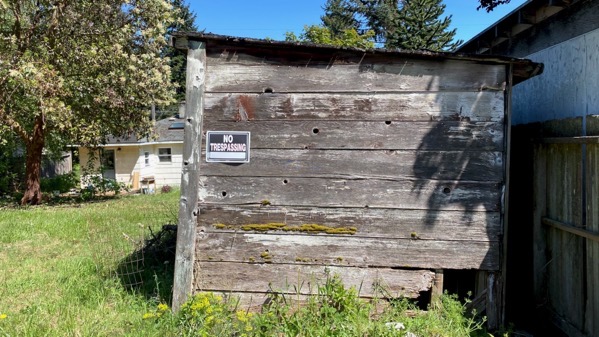
Alley view. I stayed in the alley and minded my Ps and Qs.
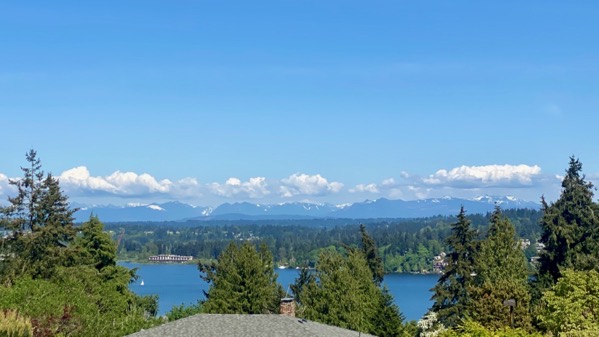
Ah, there’s that across-lake mountain view, with cloud-caps.
Posted at 9:12 PM |
Comments Off on Pieces of landscape
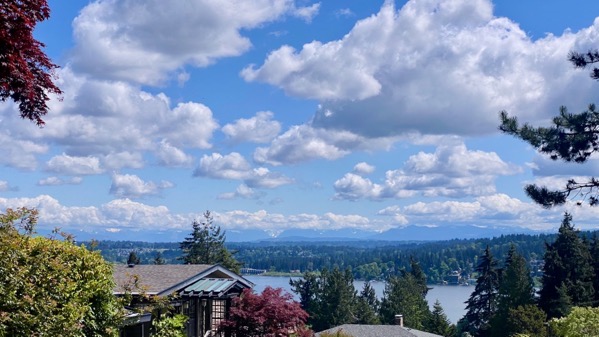
Every once in a while you can find a spot where you can see a great distance. There are mountains beneath that lowest bank of clouds, which are obscuring their tops.

No mountains here, but more of a lake view.

No distance here at all. What a careful, artful hedge-trimming job. The notch on the far right is to the depth/line selected by the trimmer working on the neighboring lot.
Posted at 11:31 PM |
Comments Off on Distant views
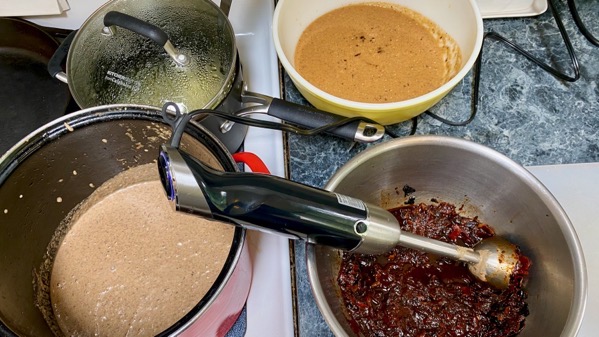
Mole negro (say: moh-lay nay-grow) is a famous sauce native to Oaxaca, Mexico. We made it (more or less) the way it is made today, so it includes Old World ingredients not available in the prehispanic kitchen, like almonds and chicken. We processed a long list of ingredients this way and that, often with toasting, ending up as three different purees, plus chicken stock (upper left). The immersion blender got a huge workout, as it was the processing workhorse.
The final assembly began with the toasted then reconstituted dried chiles (right foreground), pureed, pureed, then more pureeing, and finally sieved to achieve succulent smoothness, then adding stock and simmering down. To that, we then added the upper right mixture, colored principally by roasted tomatoes, but also including tomatillos and toasted bread crumbs. Plus other lovelies. And more stock and simmering. Next, we added the lower left mixture, three kinds of nuts plus roasted plantain, and toasted spices like anise seed and raisins and sesame seeds and cinnamon bark (not a lot, but still). And stock, followed by simmering, of course. The final add was “Mexican chocolate,” which includes more cinnamon, and is not super sweet—still, it does include sugar. And more stock and further simmering.
At the end, the harsh sharpness that the chiles initially had was gone, and their biting heat was tempered. The twenty-four (or so) ingredients had become one amazing, complex sauce.
So very yummy. Probably won’t make it again from scratch, yet a lovely experience. And the eating—well, incomparable.
Posted at 10:44 PM |
Comments Off on Mole negro Sunday

Possible North American entry for “Most Eclectic Grocery Shopping Selections, Six Items Maximum”? Upper left, that’s a jackfruit. I hear this is the season for them…. Not to be confused with a durian.
This jackfruit came from Mexico, and is labelled “The Original Party Fruit.” Flavor analysis: “Sweet with hints of mango, banana and melon.” Opening suggestions include using an oiled knife to combat stickiness. And, and, and, it’s a great meat substitute; not sure how a fruit is meat…perhaps we’ll open it Sunday.
Posted at 10:22 PM |
Comments Off on Could be

See the horizon? Those white vertical not-egrets? They flank the Columbia River at Biggs Junction, great for parasailing and wind turbines.

Found this little gem hugging the ground, with lovely about 3cm diameter flowers. ID conclusion: Lewisia rediviva. Grateful for assistance from iNaturalist, which indicated it was a Lewisia species.

I wondered what the (free!) app would do with this, as it is just vegetation without blooms. But, I thought, it has distinctive configuration. iNaturalist suggested Lithospermum ruderale, and (after comparison to multiple pictures) I concur!
Posted at 9:29 PM |
Comments Off on IDing fun

We crossed no state lines, although we did change time zones.
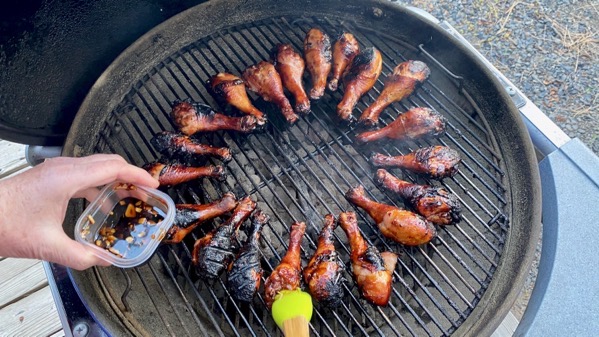
The high point was partying with old friends, and later new—so so many laughs. Such good company. Such lovely eats. So special-precious.
Title refers to second photo comments, but you already figured that out.
Posted at 1:20 AM |
Comments Off on Well-nourished

First, we were headlight-flashed by a semi. Then, we saw a large, propped up, plywood sign with crookedy letters, “Sheep on road.” Okay, we’re wide awake; we saw this in Scotland, and usually the signs are not Fake News™. Next, we saw sheep evidence (like the black smears in the left lane), then we popped over a hill, and voila! sheep, all on the left side of the road, and extending for a LOOOOONG ways up the highway. We carefully crept along, alert to Stupid Sheep Behavior—that is, stupid from the vehicular point of view. Sure enough, we were most of the way past the flock, and a few decided to cross in front of us, and instantly were head-down browsing. Like…um…sheep, soon dozens more followed. We inched along on the far right as a semi was in our lane, heading toward us and trying to make headway against the flock drifting into his lane. Surely there’s room for all, no? Just so the sheep part.
The size of the flock suggests it was being relocated for summer forage at higher elevations. With all the fenced land, the only possible passage was via the highway right of way. In Europe, it is possible to find the networks of drove-ways that have been used for thousands of years for seasonal movement of domesticated herbovores.
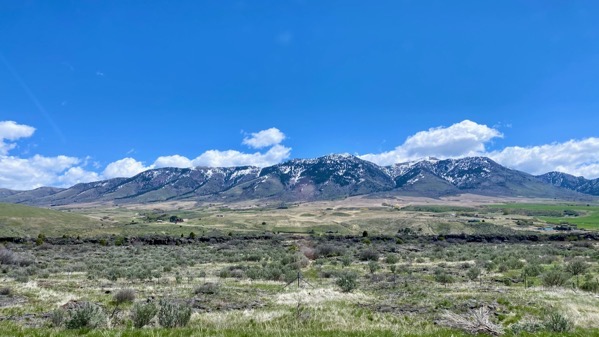
Scenery.

Snake River, where the banks are not cliffs.

Snake River making Shoshone Falls, and the Falls making rainbows. The River has cut through a lava bed from long ago that blankets the area. If you’re back from the rim perhaps a quarter mile on that flattish lava bed, you can’t see the cut the river has made, making it rather like a giant ha-ha. This falls is so high that the progress of spawning fish is halted, and this is an excellent hunting spot.
Posted at 10:10 PM |
Comments Off on Transhumance and more
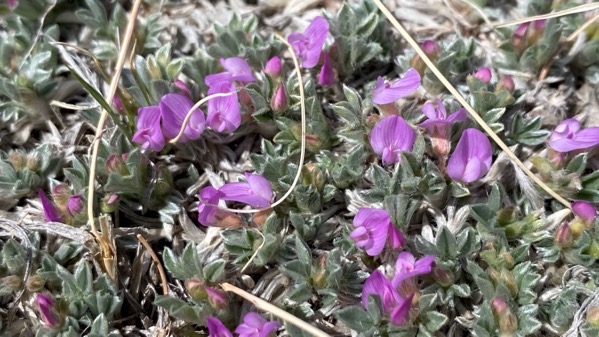
We stopped to stretch our legs while we were motoring west on the plains and I found these wee blooms that my magic iNaturalist ID app indicated is a milk vetch, and a legume. I can SEE the latter—look at those flower shapes…so leguminous.

Continuing west, we climbed up and up after Cheyenne, and into sleet and snow-rain. Fortunately it was over 40°F, so no ice on the road to worry about.

Soon, we descended again and I found a wee sagebrush doing springtime burgeoning. A nearby sign indicated that Wyoming hosts 13 species of sagebrush. And this one is…?
Posted at 10:31 PM |
Comments Off on Sun, not sun, sun (thankfully)

We did get into the train station this morning. Nice budget version of art deco details, as we also saw on the exterior.
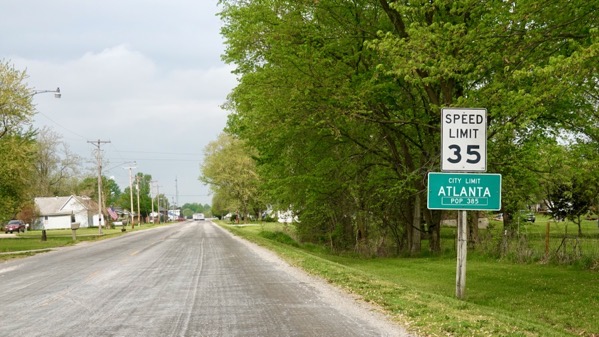
Then we headed down the road…to Atlanta! Hey, look at that population! And the town further down the road: Macon. No kidding. Much larger population, so this is a true alternate universe.
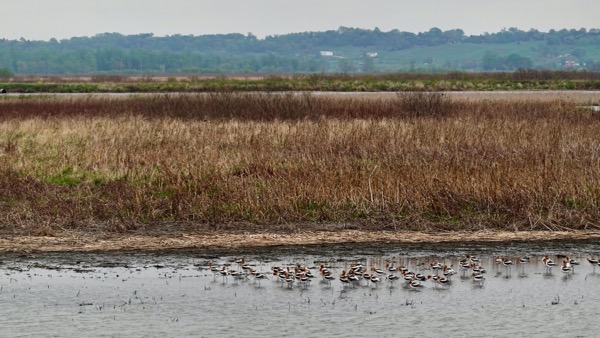
Motored west to Loess Bluffs NWR. The Refuge is mostly Missouri River floodplain, and not the bluffs. I did notice our westbound descent to the floodplain, and only later realized that our path dropped down from the loess bluffs.

Above are avocets. These are great egrets. We also saw many great blue herons and assorted ducks and geese. And four white pelicans. Whatta surprise: pelicans.

And this national crane.

We’re overnighting by the mighty flat Platte, but this is a dug lake with a forest of motels adjacent. Nighty-night.
Posted at 10:29 PM |
Comments Off on Looking for loess

The Big Muddy dominated half our driving day. It was big and it carried sediment. “Formidable” seems rather tame for summing it up, although it carries the appropriate tenor.
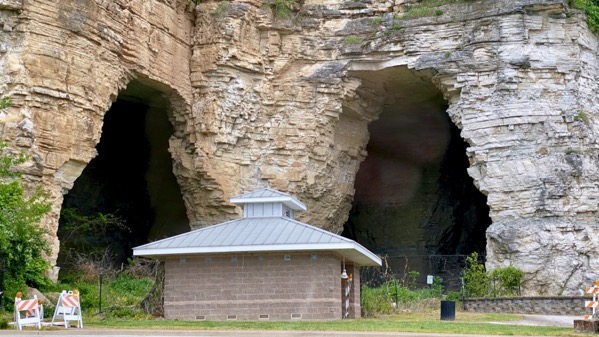
This is on the north edge of Alton, Illinois, where the river slid along limestone bluffs that Euroamericans heavily mined. I assume these are abandoned mine entrances.

For the other half of our driving day, we pushed west, to stop in La Plata, Missouri, pronounced like plate, so: lah plate-uh.

Rather unremarkable town with an Amtrak Stop [that I assume Joe Biden has never visited] and an art deco style station that is suffering genteel decay (the exterior, anyway, as we didn’t get inside—yet).
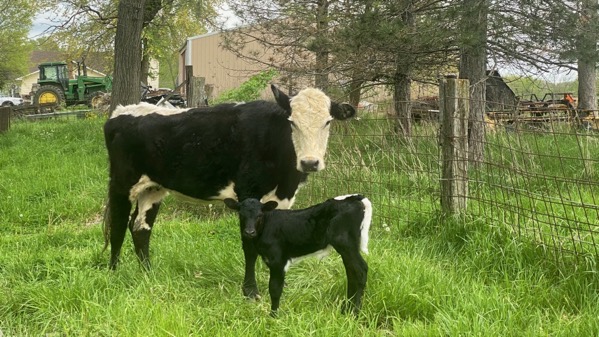
These two also live in the town. It is bucolic, with frequent train whistles.
Posted at 8:02 PM |
1 Comment »






























